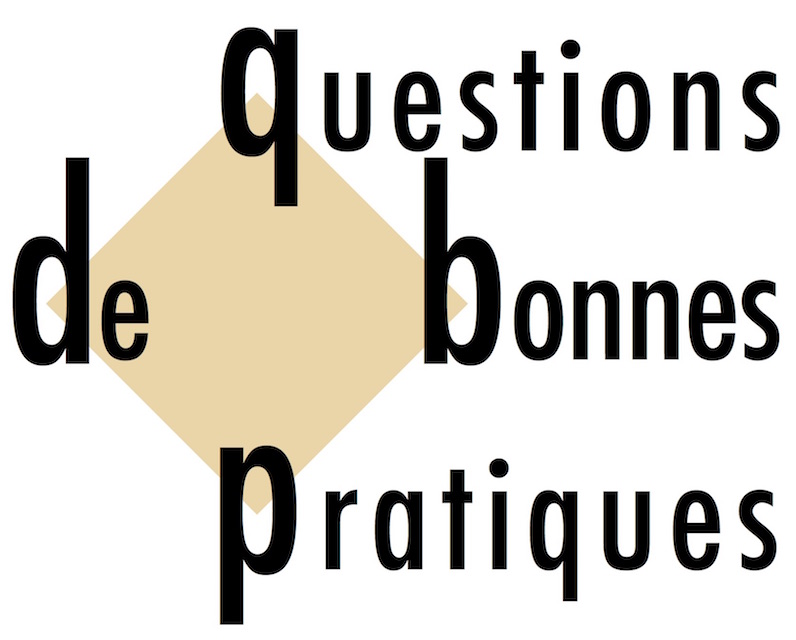Lien vers la table des matières de la bibliographie thématique, composée de documents réunis par un Groupe de travail constitué dans la perspective de préciser les spécificités de l'approche clinique de l'Antenne 110 par rapport aux "Evidence-Based Practices" : CLIQUER ICI.
Akmanoglu, N., & Batu, S. (2004). Teaching pointing to numerals to individuals with autism using simultaneous prompting. Education and Training in Developmental Disabilities, 39(4), 326-336.
Anderson, J., & Le, D. D. (2011). Abatement of intractable vocal stereotypy using an overcorrection procedure. Behavioral Interventions, 26(2), 134-146.
Barton, E. E., & Pavilanis, R. (2012). Teaching pretend play to young children with autism. Young Exceptional Children, 15(1), 5-17. http://dx.doi.org/10.1177/1096250611424106
Barton, E. E., & Wolery, M. (2010). Training teachers to promote pretend play in young children with disabilities. Exceptional Children, 77(1), 85-106.
Batchelder, A., McLaughlin, T. F., Weber, K. P., Derby, K. M., & Gow, T. (2009). The effects of hand-over-hand and a dot-to-dot tracing procedure on teaching an autistic student to write his name. Journal of Developmental and Physical Disabilities, 21(2), 131-138. http://dx.doi.org/10.1007/s10882-009-9131-2
Birkan, B., McClannahan, L. E., & Krantz, P. J. (2007). Effects of superimposition and background fading on the sight-word reading of a boy with autism. Research in Autism Spectrum Disorders, 1(2), 117-125.
Bouxsein, K. J., Tiger, J. H., & Fisher, W. W. (2008). A comparison of general and specific instructions to promote task engagement and completion by a young man with asperger syndrome. Journal of Applied Behavior Analysis, 41(1), 113-116. http://dx.doi.org/10.1901/jaba.2008.41-113
Chen, G. M., Yoder, K. J., Ganzel, B. L., Goodwin, M. S., & Belmonte, M. K. (2012). Harnessing repetitive behaviours to engage attention and learning in a novel therapy for autism: An exploratory analysis. Frontiers in Psychology, 3(FEB). http://dx.doi.org/10.3389/fpsyg.2012.00012
Cihak, D. F., & Grim, J. (2008). Teaching students with autism spectrum disorder and moderate intellectual disabilities to use counting-on strategies to enhance independent purchasing skills. Research in Autism Spectrum Disorders, 2(4), 716-727. http://dx.doi.org/10.1016/j.rasd.2008.02.006
Coe, D., Matson, J., Fee, V., Manikam, R., & Linarello, C. (1990). Training nonverbal and verbal play skills to mentally retarded and autistic children. J Autism Dev Disord, 20(2), 177-187.
Duker, P. C., & Schaapveld, M. (1996). Increasing on-task behaviour through interruption-prompting. Journal of Intellectual Disability Research, 40(4), 291-297.
Endicott, K., & Higbee, T. S. (2007). Contriving motivating operations to evoke mands for information in preschoolers with autism. Research in Autism Spectrum Disorders, 1(3), 210-217.
Fischer, J. L., Howard, J. S., Sparkman, C. R., & Moore, A. G. (2010). Establishing generalized syntactical responding in young children with autism. Research in Autism Spectrum Disorders, 4(1), 76-88.
Groskreutz, N. C., Groskreutz, M. P., & Higbee, T. S. (2011). Effects of varied levels of treatment integrity on appropriate toy manipulation in children with autism. Research in Autism Spectrum Disorders, 5(4), 1358-1369. http://dx.doi.org/10.1016/j.rasd.2011.01.018
Hadwin, J., Baron-Cohen, S., Howlin, P., & Hill, K. (1996). Can we teach children with autism to understand emotions, belief, or pretence? Development and Psychopathology, 8(02), 345-365.
Harris, S. L., Handleman, J. S., & Alessandri, M. (1990). Teaching youths with autism to offer assistance. J Appl Behav Anal, 23(3), 297-305. http://dx.doi.org/10.1901/jaba.1990.23-297
Ingvarsson, E. T., & Hollobaugh, T. (2011). A comparison of prompting tactics to establish intraverbals in children with autism. J Appl Behav Anal, 44(3), 659-664. http://dx.doi.org/10.1901/jaba.2011.44-659
Ingvarsson, E. T., & Le, D. D. (2011). Further evaluation of prompting tactics for establishing intraverbal responding in children with autism. The Analysis of Verbal Behavior, 27(1), 75-93.
Janet, I. Y., Christian, L., Vittimberga, G., & Lowenkron, B. (2006). Generalized negatively reinforced manding in children with autism. The Analysis of Verbal Behavior, 22(1), 21.
Kavon, N. M., & McLaughlin, F. T. (1995). Interventions for echolalic behaviour for children with autism: A review of verbal prompts and the cues pause point procedure. B.C. Journal of Special Education, 19(2).
Koegel, R. L., Shirotova, L., & Koegel, L. K. (2009). Brief report: Using individualized orienting cues to facilitate first-word acquisition in non-responders with autism. J Autism Dev Disord, 39(11), 1587-1592. http://dx.doi.org/10.1007/s10803-009-0765-9
Leaf, J. B., Sheldon, J. B., & Sherman, J. A. (2010). Comparison of simultaneous prompting and no-no prompting in two-choice discrimination learning with children with autism. Journal of Applied Behavior Analysis, 43(2), 215-228. http://dx.doi.org/10.1901/jaba.2010.43-215
Montgomery, J., Storey, K., Post, M., & Lemley, J. (2011). The use of auditory prompting systems for increasing independent performance of students with autism in employment training. International Journal of Rehabilitation Research. Internationale Zeitschrift Für Rehabilitationsforschung. Revue Internationale De Recherches De Réadaptation, 34(4), 330-335. http://dx.doi.org/10.1097/MRR.0b013e32834a8fa8
Ostryn, C., & Wolfe, P. S. (2011). Teaching children with autism to ask “what's that?” Using a picture communication with vocal results. Infants & Young Children, 24(2), 174-192. http://dx.doi.org/10.1097/IYC.0b013e31820d95ff
Potter, J. N., Hanley, G. P., Augustine, M., Clay, C. J., & Phelps, M. C. (2013). Treating stereotypy in adolescents diagnosed with autism by refining the tactic of "using stereotypy as reinforcement". Journal of Applied Behavior Analysis, 46(2), 407-423. http://dx.doi.org/10.1002/jaba.52
Reichle, J., Dropik, P. L., Alden-Anderson, E., & Haley, T. (2008). Teaching a young child with autism to request assistance conditionally: A preliminary study. American Journal of Speech-Language Pathology, 17(3), 231-240. http://dx.doi.org/10.1044/1058-0360(2008/022)
Ringdahl, J. E., Kopelman, T., & Falcomata, T. S. (2009). Applied behavior analysis and its application to autism and autism related disorders. In J. L. Matson (Ed.), Applied behavior analysis for children with autism spectrum disorders (pp. 15-32). Springer. http://dx.doi.org/10.1007/978-1-4419-0088-3_2
Shabani, D. B., Katz, R. C., Wilder, D. A., Beauchamp, K., Taylor, C. R., & Fischer, K. J. (2002). Increasing social initiations in children with autism: Effects of a tactile prompt. J Appl Behav Anal, 35(1), 79-83. http://dx.doi.org/10.1901/jaba.2002.35-79
Shillingsburg, M. A., Valentino, A. L., Bowen, C. N., Bradley, D., & Zavatkay, D. (2011). Teaching children with autism to request information. Research in Autism Spectrum Disorders, 5(1), 670-679. http://dx.doi.org/10.1016/j.rasd.2010.08.004
Symons, F., & Davis, M. (1994). Instructional conditions and stereotyped behavior: The function of prompts. Journal of Behavior Therapy and Experimental Psychiatry, 25(4), 317-324.
Tarbox, J., Zuckerman, C. K., Bishop, M. R., Olive, M. L., & O'Hora, D. P. (2011). Rule-governed behavior: Teaching a preliminary repertoire of rule-following to children with autism. The Analysis of Verbal Behavior, 27(1), 125-39.
Taylor, B. A., & Hoch, H. (2008). Teaching children with autism to respond to and initiate bids for joint attention. J Appl Behav Anal, 41(3), 377-391.
Thomas, B. R., Lafasakis, M., & Sturmey, P. (2010). The effects of prompting, fading, and differential reinforcement on vocal mands in non-verbal preschool children with autism spectrum disorders. Behavioral Interventions, 25(2), 157-168.
Twarek, M., Cihon, T., & Eshleman, J. (2010). The effects of fluent levels of big 6+ 6 skill elements on functional motor skills with children with autism. Behavioral Interventions, 25(4), 275-293.
Vedora, J., Meunier, L., & Mackay, H. (2009). Teaching intraverbal behavior to children with autism: A comparison of textual and echoic prompts. The Analysis of Verbal Behavior, 25(1), 79-86.
Whalon, K., & Hanline, M. F. (2008). Effects of a reciprocal questioning intervention on the question generation and responding of children with autism spectrum disorder. Education and Training in Developmental Disabilities, 43(3).
Williams, G., Donley, C. R., & Keller, J. W. (2000). Teaching children with autism to ask questions about hidden objects. Journal of Applied Behavior Analysis, 33(4), 627-630.
Wolfe, K., Slocum, T. A., & Kunnavatana, S. S. (2014). Promoting behavioral variability in individuals with autism spectrum disorders A literature review. Focus on Autism and Other Developmental Disabilities, 1-11. http://dx.doi.org/10.1177/1088357614525661
Yanardag, M., Birkan, B., Yılmaz, Konukman, F. K., Ağbuğa, B., & Lieberman, L. (2011). The effects of least-to-most prompting procedure in teaching basic tennis skills to children with autism. Kineziologija, 43(1), 44-55.
Yilmaz, I., Konukman, F., Birkan, B., & Yanardag, M. (2010). Effects of most to least prompting on teaching simple progression swimming skill for children with autism. Education and Training in Autism and Developmental Disabilities, 45(3), 440-448.



